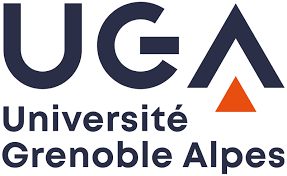- Imprimer
- Partager
- Partager sur Facebook
- Share on X
- Partager sur LinkedIn
Soutenance
Le 28 janvier 2021

Contribution of neutron /X-ray tomography for the drying modelling of cohesive porous media
The drying of cement-based materials affects directly their durability, which has a major economic, societal, and environmental impact.
The conventional experimental techniques such as gravimetric and sensor-based measurements, which are employed to study the drying-driven processes, provide only bulk-averaged or point-wise measurements which are not sufficient to characterize these processes. However, the significant advances in full-field techniques have allowed unprecedented insight into these local processes. Notably, for cement-based materials, x-ray and neutron tomography lend themselves as highly complementary tools for the study of their THM behavior. In fact, the high sensitivity to density variations of x-ray imaging gives access to the developments of fractures, in 4D (3D+time). On the other hand, neutron tomography allows the study of the evolution of the moisture field in 4D, thanks to its high hydrogen sensitivity.
This Ph.D. takes advantage of these two highly complementary techniques, which, together with advanced numerical modelling tools, allowed for a novel experimental/numerical insight to study the drying-driven physical processes in cement-based materials. In this work, two experimental campaigns were performed at the NeXT instrument located at the ILL. In the first campaign, neutron tomography was employed to characterize the moisture distribution of a set of cylindrical mortar samples which were set to dry sequentially in a TH controlled environment (T=20 ºC, RH=35 %) to represent different hydric states. The main phases of the mortar (aggregates, cement paste, and voids were separated, and saturation profiles were deduced and validated against the weight loss measurements. In the second experimental campaign, more complexity was added to the experimental drying conditions by heating concrete and cement paste samples up to moderate temperature which has led to the appearance of cracks in the later sample. The analysis of the acquired simultaneous neutron/x-ray data-set (once aligned in time and across modalities) allowed for the quantification of the 4D moisture profiles which were found to predict an overall water loss at hydric equilibrium coherent with the corresponding analytical analysis. In the cement paste sample, the x-ray dataset captures the evolution of an extensive cracking network, opening, and propagation toward the core of the sample. Then, a novel analysis procedure was proposed which allowed the extraction of these fractures and the analysis of their interplay with local drying as captured through neutron imaging.
On the other hand, the numerical approach employed in this study consisted of improving the numerical model predictive capacity by assessing the implications of common simplifications on the modelling response. These common simplifications can be divided in three main categories which regard the consideration of gaseous transport modes, the TH and HM couplings, and the morphological description of the material. Quantification of these simplifications effects regarding the used model and the choice of TH coupling laws was done by comparing mass loss response surfaces in relative humidity and temperature space for multiple configurations. The results show relative error maps at early, mid, and late drying stages for every compared case. On the other hand, the simplification regarding the HM coupling was evaluated in a 2D mesoscopic simulation framework where an artificial concrete mesostructure had to be generated for cracking localization purposes. The cracking impact was then assessed both locally on the saturation fields and on the global mass loss response. Finally, a CT-FE mapping scheme was proposed which consisted of extracting the mesoscale morphology of concrete (aggregates and pores) from x-ray/neutron attenuation fields and presenting it explicitly on a FE mesh. This has permitted to perform 3D multiphase THM simulation of concrete at the mesoscale.
JURY
Mme. Catherine DAVY, Professeur à l’École Centrale de Lille, Rapporteur
M. Fekri MEFTAH, Professeur à l’INSA Rennes, Examinateur
M. Giuseppe SCIUME, Maître de conférences à l’Université de Bordeaux, Examinateur
M. Bruno HUET, Docteur Ingénieur de recherche chez LafargeHolcim R&D, Examinateur
M. Jean-Luc ADIA, Docteur Ingénieur de recherche chez EDF R&D, Invité
M. Matthieu BRIFFAUT, Maître de conférences HDR à l’université Grenoble Alpes, Directeur de thèse
M. Stefano DAL PONT, Professeur à l’université Grenoble Alpes, Co-encadrant
M. Alessandro TENGATTINI, Maître de conférences à l’université Grenoble Alpes, Co-encadrant
*Caption
Vertical and horizontal slices of the 3D reconstructions of the neutron and x-ray tomographies of the concrete sample, highlighting the high complementary of the micro-structural information obtained with these techniques. The neutron attenuation field (the average attenuation of the materials contained in a voxel μn) on the left of the partially saturated concrete sample highlights aggregates and pores from the cement paste which is further differentiated in dry and wet. Nonetheless pores and aggregates have comparable attenuation in the neutron tomography whereas they have significantly different x-ray attenuations μx, as shown on the right.
Date
14h00
Localisation
Remote session


- Imprimer
- Partager
- Partager sur Facebook
- Share on X
- Partager sur LinkedIn